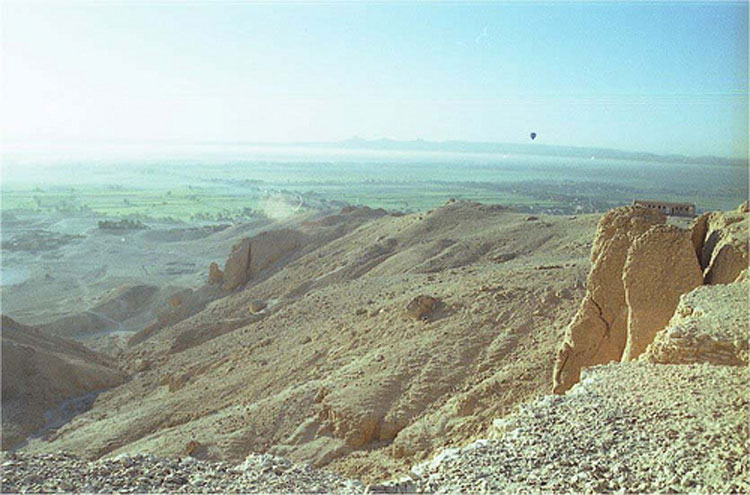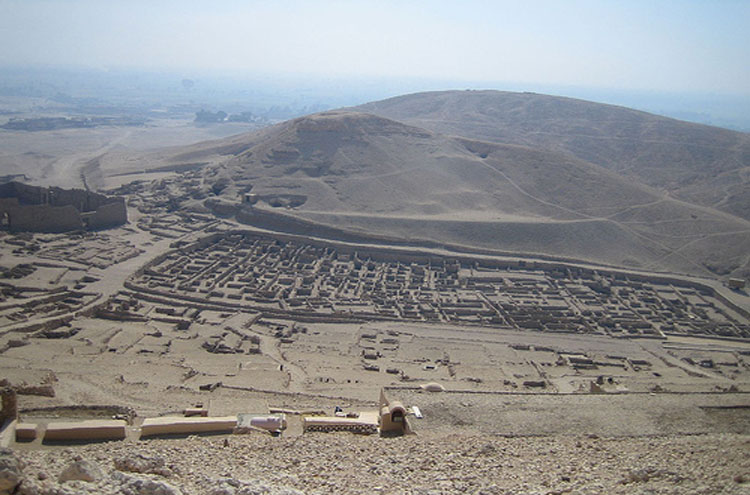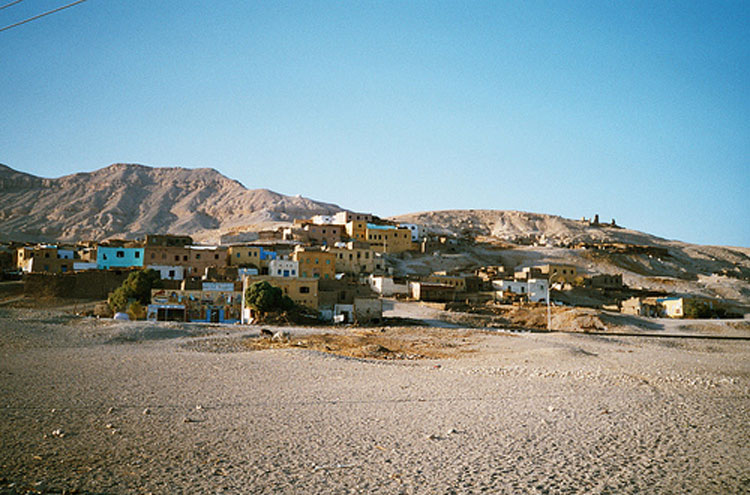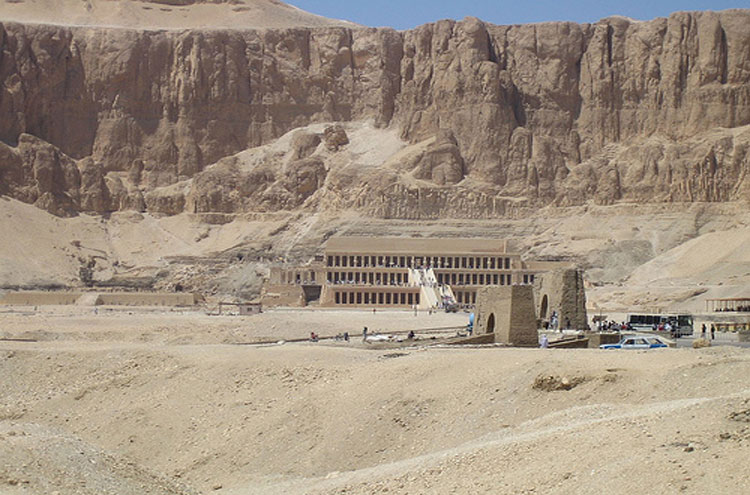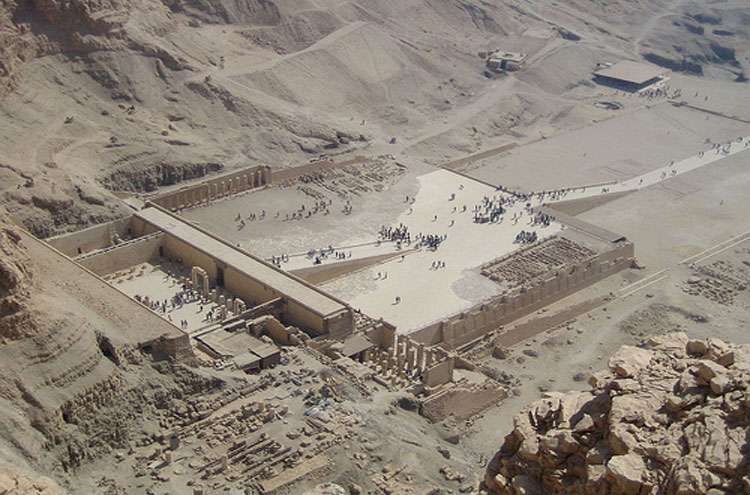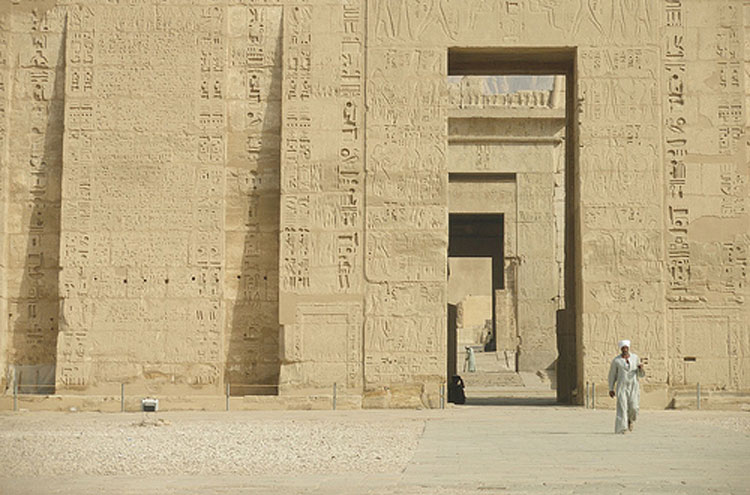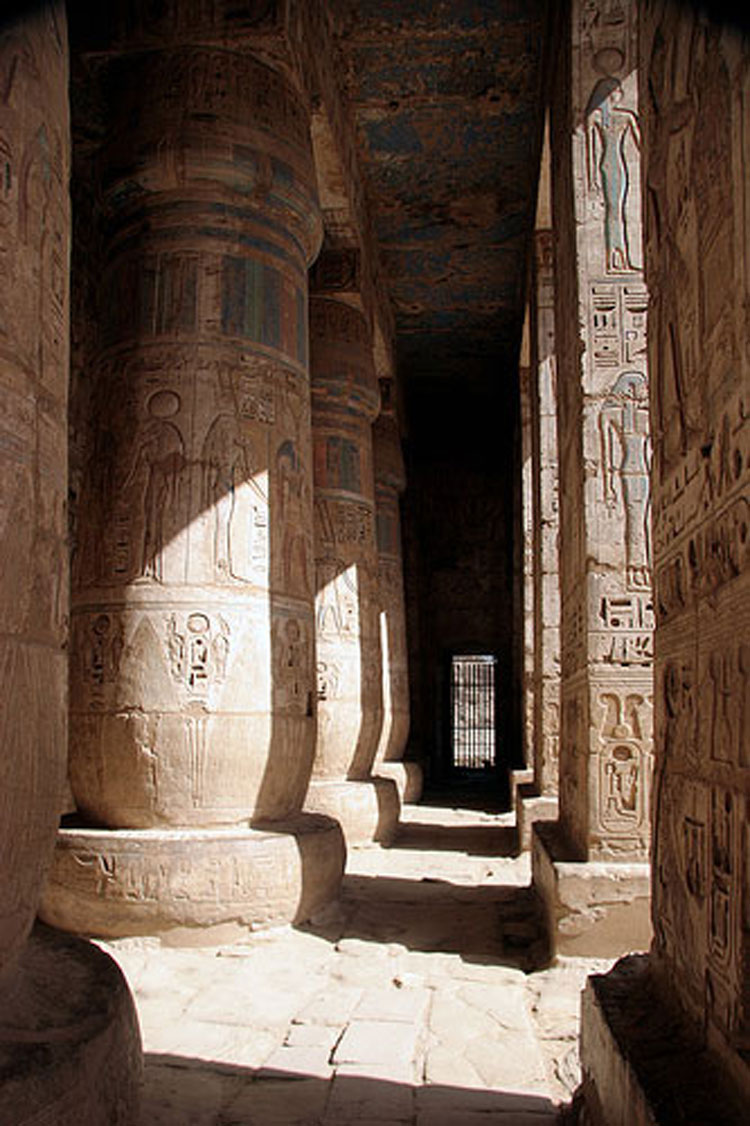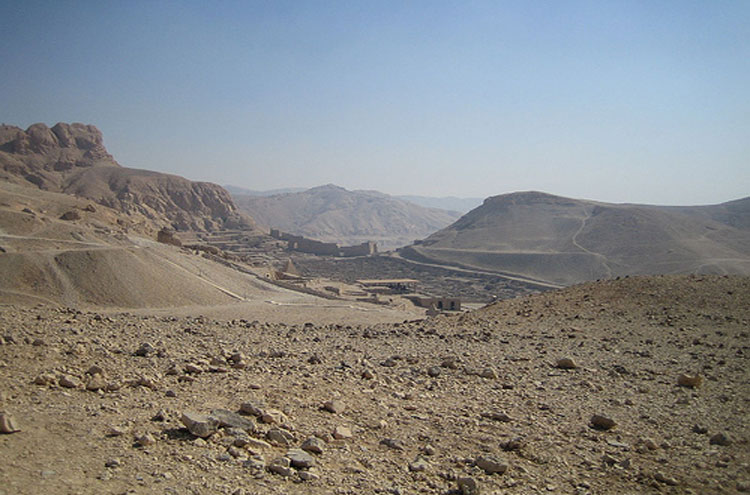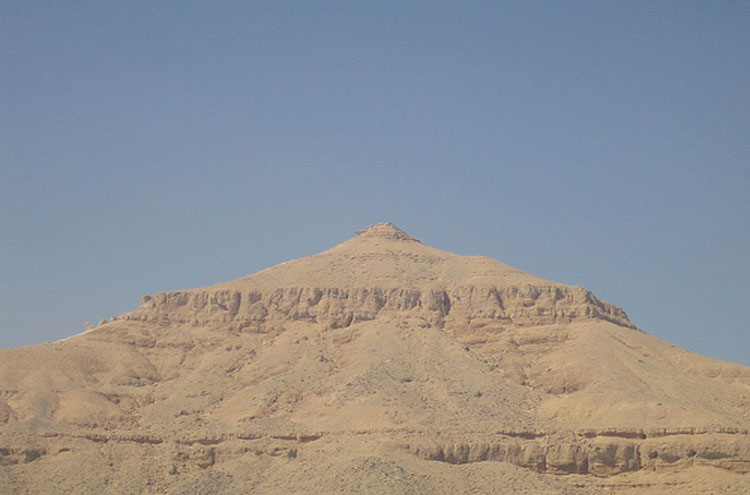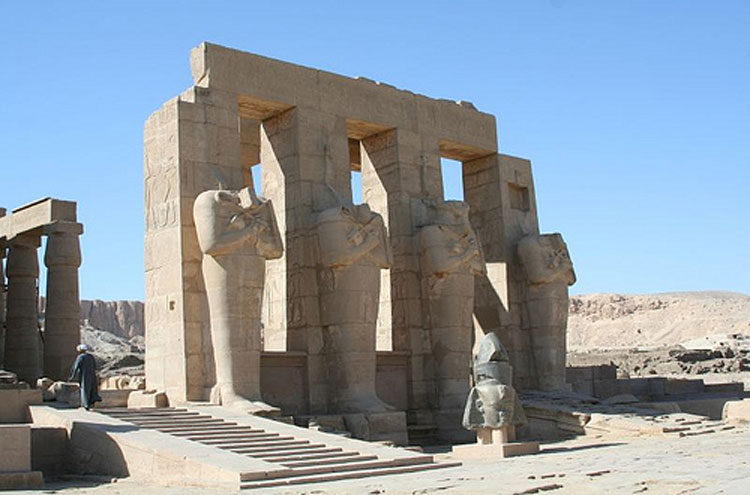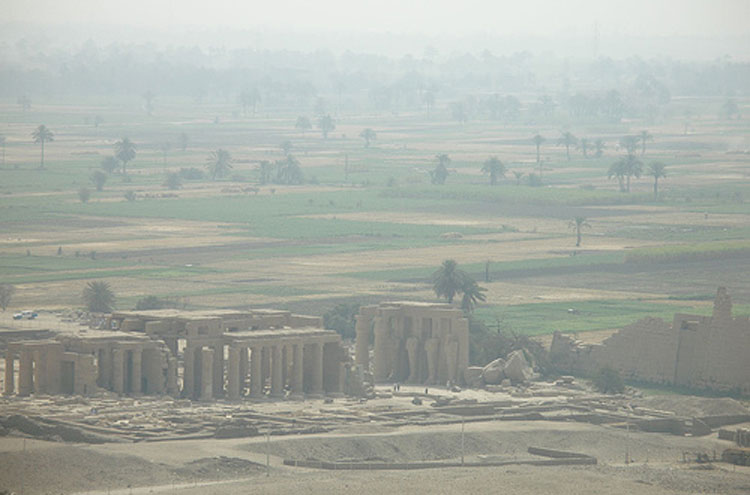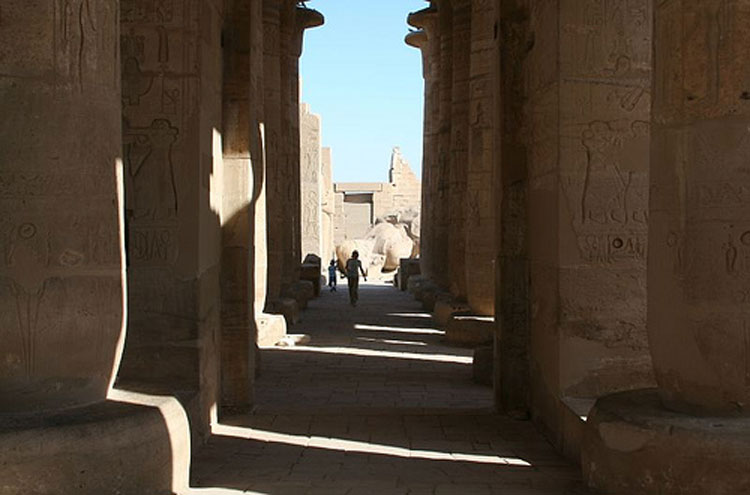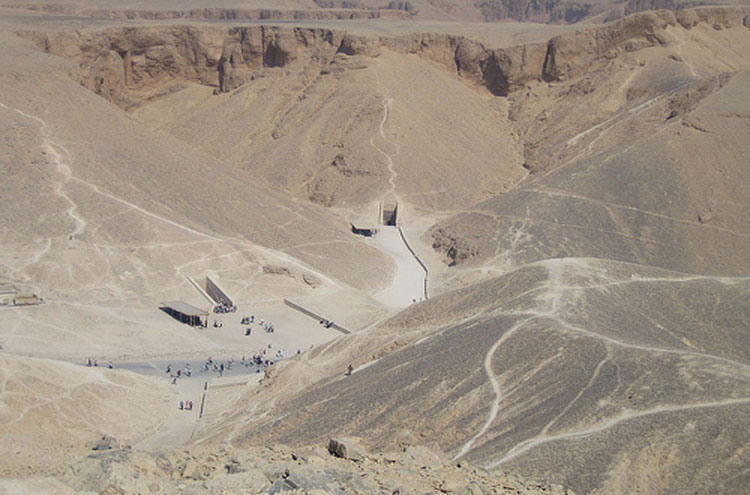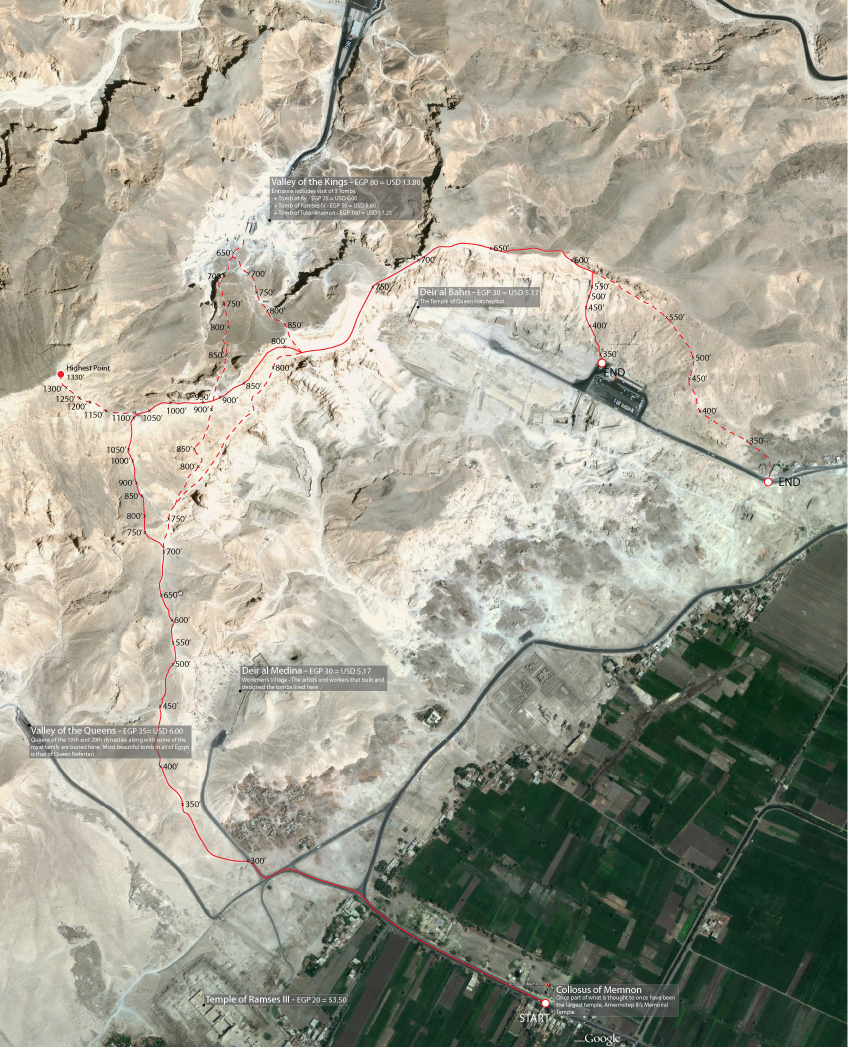To the Valley of the Kings
Key information: To the Valley of the Kings 
- This horseshoe-shaped path, following an ancient track along a desert escarpment, lets one see the huge Pharaonic necropolis of ancient Thebes within the context of its desert landscape.
- Three-hour walk passes some of Egypt's greatest monuments, including Deir el-Medina, the Valley of the Kings, Temple of Hatshepsut, the Asasif tombs and the Tombs of the Nobles.
- Once off the Nile flood-plain, this is serious, baking-dry desert; best attempted in Winter, or at dawn. Much of the route is fairly solitary, but expect predictable crowds at famous sites.
- If visiting sites en route, make sure to buy tickets at the kiosks before setting off. They cannot be bought on site.
Walkopedia rating
- Walkopedia rating85
- Beauty28
- Natural interest12
- Human interest18
- Charisma32
- Negative points5
- Total rating85
- Note: Negs: Mass tourism; tediously bureaucratic ticket sales; some danger of terrorism
Vital Statistics
- Length: 7-9km
- 3 hours
- Maximum Altitude: N/A
- Level of Difficulty: Moderate
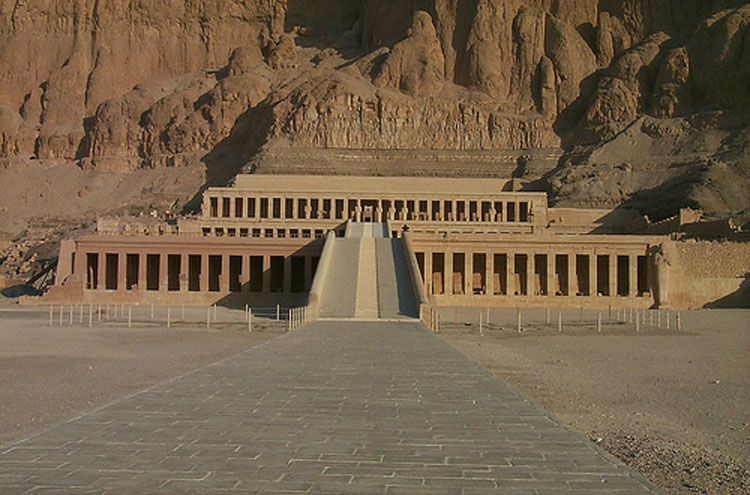
WALK SUMMARY
Whatever the drawbacks of the country as a whole, there is no escaping the fact that Egypt possesses some of the worlds most stunning archaeology which, despite jostling crowds and queuing tour-buses, leaves an indelible impression of and admiration for our forebears. None more so than Luxor, built around the temples and graves of ancient Thebes: a source of inspiration to poets, artists and writers since not long after the original city was abandoned.
The manner in which the majority of people visit the tomb and temple complex of ancient Thebes, while providing some breathtaking moments, generally fails to reflect either the necropoliss enormous size or its orientation within the landscape. None of this is helped by the local authorities obdurately bureaucratic method of ticket-sales from an ever-moving point somewhere on the main road, which can cause intense frustration and certainly requires much forethought for anybody not relying on guides and organized transport.
However, this almost-circular route, starting at the ticket kiosk in Nag Kohlah and ending at the Tombs of the Nobles and the Rasmusseum, follows an ancient and still-used donkey-path (said by some sources to have been used by the artisans who involved in construction; others claim that they were taken on-site blindfold to avoid grave-robbing) leading up and along the length of the escarpment which hides the Valley of the Kings from the outside world. Along the way there are views of and potential detours to: the huge temple of Medinet Habu, the Deir el-Medina (the artisans village, containing their own hobby-tombs), the Valley of the Queens, The Valley of the Kings, Deir-el-Bahri and Hatshepsuts magnificent three-tier temple, the Asasif Tombs belonging to the later Nubian dynasty, the Tombs of the Nobles and the vast and pompous Ramesseum, inspiration for Shelleys great sonnet Ozymandias, where the kings vast and trunkless legs of stone still stand to this day among the broken remnants of the rest of his statue.
Other accounts: share your experiences
Your comments on this walk, your experiences and suggestions, and your photos are very welcome. Where appropriate, you will be credited for your contribution.
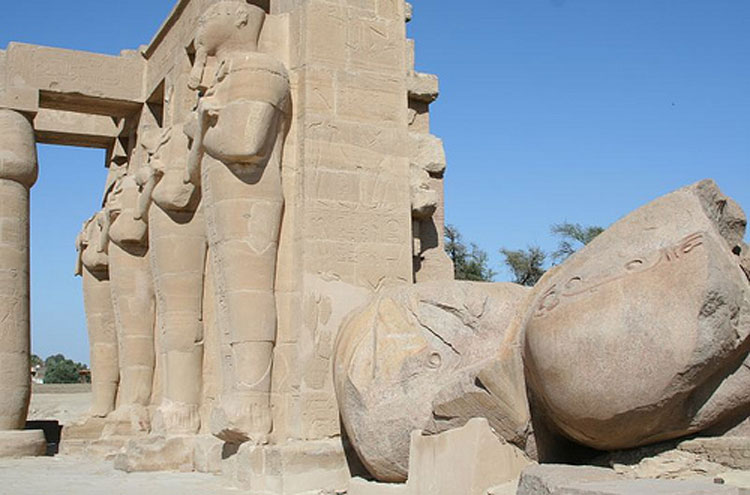
We have a lot of helpful practical information and tips about this walk, covering everything from the best books and maps, to timing and weather, geting there, possible problems, whether you need a guide and where to find them, and useful websites. This section is only open to members.
Membership is FREE AND JOINING TAKES 30 SECONDS. To login or sign up click here
Safety and problems: All walks have inherent risks and potential problems, and many of the walks featured on this website involve significant risks, dangers and problems. Problems of any sort can arise on any walk. This website does not purport to identify any (or all) actual or potential risks, dangers and problems that may relate to any particular walk.
Any person who is considering undertaking this walk should do careful research and make their own assessment of the risks, dangers and possible problems involved. They should also go to “Important information” for further important information.
Anyone planning an expedition to this place should see further important information about this walk.
Safety and problems: All walks have inherent risks and potential problems, and many of the walks featured on this website involve significant risks, dangers and problems. Problems of any sort can arise on any walk. This website does not purport to identify any (or all) actual or potential risks, dangers and problems that may relate to any particular walk.
Any person who is considering undertaking this walk should do careful research and make their own assessment of the risks, dangers and possible problems involved. They should also go to “Important information” for further important information.
COMMUNITY COMMENTS AND PHOTOS
Name: DBomb
Posted on: 27/03/2011
During my second trip to Egypt, I was interested in having experiences that I missed the first time and those that most tourists might miss out on. After scuba diving in the Red Sea this walk was definitely the highlight of the trip. Being the only four people for the majority of the walk led to a very unique and meditative view on the landscape. This walk let us escape the hustle of the touristy areas and being that we came up from the side opposite of the Valley of the Kings we escaped the trap of being led to the top for a price. After crossing the Nile, we took a cab from the Nile to the Colossus of Memnon. Continuing along the road next to the Colossus of Memnon towards the hills, once arriving at a fork in the road veer to the left continue and take the the first right. If you continue down this road you will come to Deir al Medina [the Workmen's Village], instead of continuing down this road go off the road to the left. Here you will find 'paths' leading up the mountain. As you go up these path's you will find a long set of stairs leading you most of the way up the mountain. You will pass at least one checkpoint. At these checkpoints there may be a few men who watch people coming up the mountain. It may seem intimidating but most likely they will just smile and wave as you pass. Once past the first checkpoint there are many ways you can go up the mountain [see map]. If you plan on heading into the Valley of the Kings, make sure you purchase your tickets before hand if not just make your way around to Deir al Bahri [Queen Hatsheptsut's Temple]. As you will find most people suggest it would be a good idea to do this walk in the winter. We did it in January and it was fairly warm but not overbearing. I imagine in the summer this shadeless, light colored mountain becomes intolerably hot. Hope the map makes your trip a little easier. Enjoy
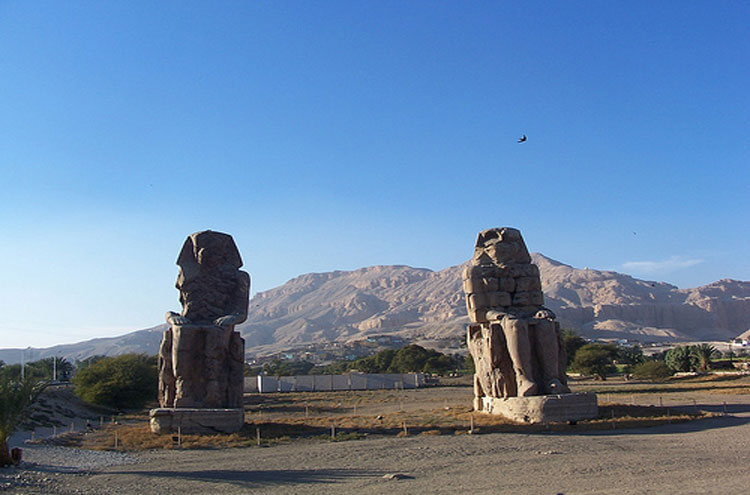
OTHER ACCOUNTS
share your experiences
Add your experiences, suggestions and photos. We would be delighted to receive your writing and ideas (which will be attributed appropriately where published).
Anyone planning an expedition to this place should see further important information about this walk.
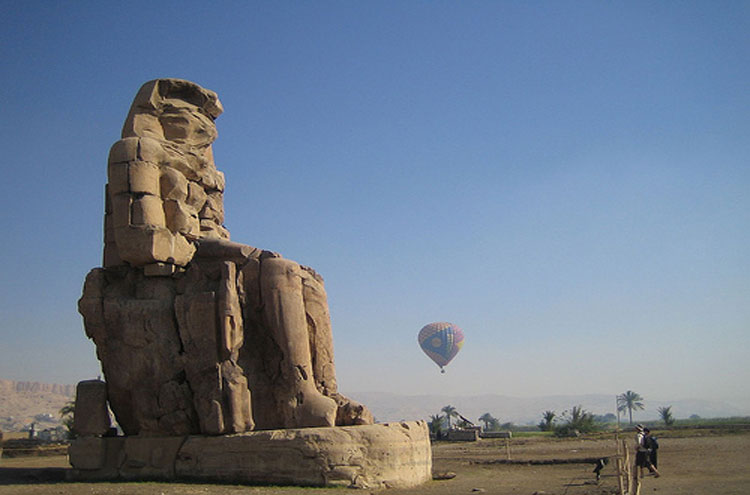
Responsible travel matters, a lot. How you travel will make a real difference - for better or worse. PLEASE consider this when making plans. Read more



